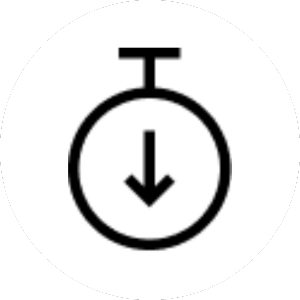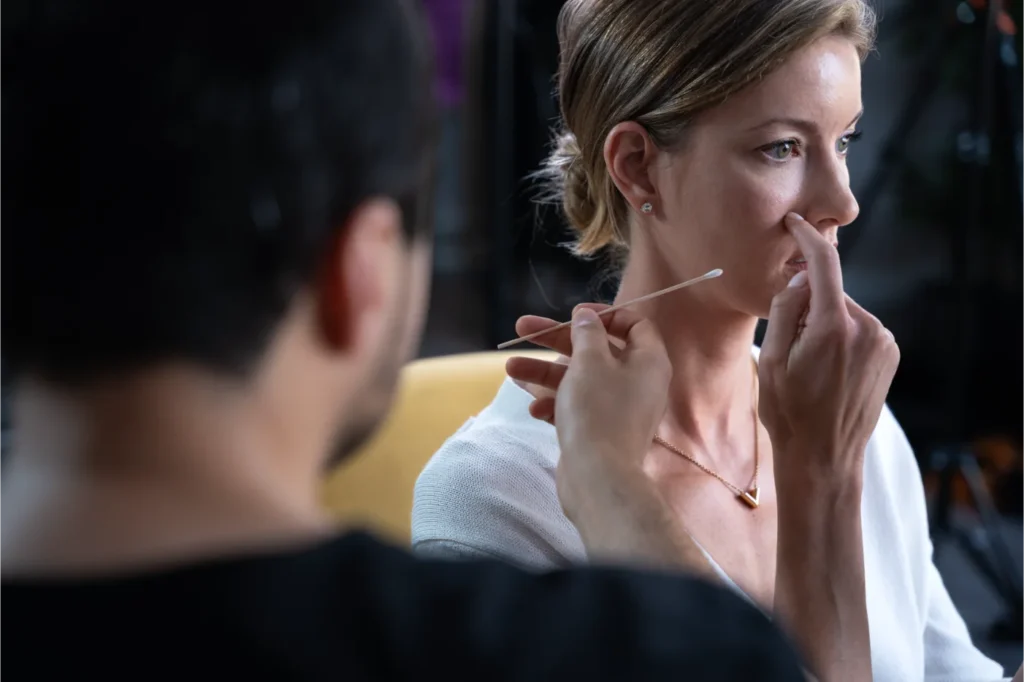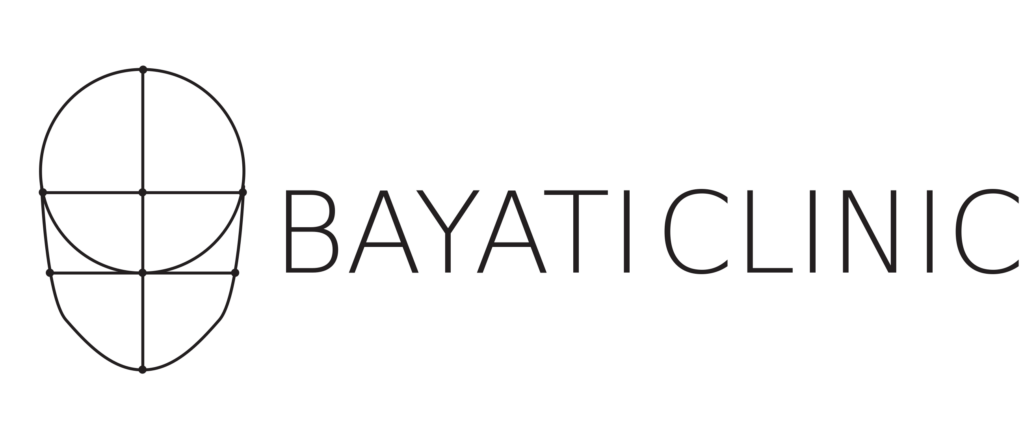Filler dissolving is a process that involves injecting small quantities of a liquid substance, called Hyaluronidase (or ‘hyalase’) into areas of previous hyaluronic acid dermal filler. So This process dissolves the filler and helps to reverse its cosmetic effects.
At Bayati Clinic, we maintain the highest standard of care and use the most comprehensive scanning technology with high resolution imaging capabilities. Dr Bayati is a dual-trained Consultant Radiologist and cosmetic injector. He is specialist in image-guided procedures using ultrasound, and is one of a few UK experts in the use of high-resolution ultrasound imaging to map filler position and accurately target filler for reversal at the appropriate tissue depth. So This targeted approach avoids conventional “blind” dissolving and has the advantage of using only the minimum quantity of hyalase.
Hyaluronidase (also known as ‘Hyalase’) is an enzyme that naturally occurs in our skin. Its liquid form is an approved prescription-only substance frequently administered to boost the absorption or breakdown of hyaluronic acid filler that has been injected underneath the skin. It has an off license use in aesthetic medicine.
Hyaluronidase breaks down the bonds that keep hyaluronic acid filler molecules together. The filler will often immediately begin to soften and dissolve over a period of a few days up to two weeks.

£400-800

30-45 min

2-3 /10

Minimal (1-2 days)

Case specific

£400-800

30-45 mins

2-3/10

Minimal (1-2 days)

As patients frequently visit cosmetic clinics pursuing filler treatment for a variety of aesthetic concerns, complications may occur.
Although uncommon, fillers may cause a wide range of problems. Reversing filler is usually, but not always, effective in addressing these complications.
The most common complications in patients presenting to our clinic, requiring dissolving treatments include:

Example patients attending with significant facial distortion and overfilling with hyaluronic acid filler. Ultrasound guided filler mapping and targeting dissolving performed, followed by correct filler re-treatment using appropriate quantities.

Be part of the process by following the real-time ultrasound scan of your facial anatomy, to become well educated about your treatments and visualise your cosmetic concern. So Same day or follow-up ultrasound guided filler dissolving can be performed to reverse regions of unwanted filler.
“Ultrasound-guided cosmetic treatment merges my separate expertise in clinical radiology and aesthetic medicine… and so offers a distinguished approach in treatment safety and evaluation”
~ Dr Bayati

MRI scanning is an advanced imaging method for facial filler mapping. So We create highly specialised 3D facial models using MRI to map the distribution of previously injected filler. So This diagnostic approach is used in patients with more complicated filler history in order to provide a more comprehensive visual overview of filler location, prior to ultrasound-guided dissolving.
Ultrasound improves accuracy in the process of reversing filler by identifying precisely the location of filler and only targeting this area for dissolving. This reduces the risk of complications related to hyalase use, and allows us to see exactly where the filler is located, both in the deep and superficial layers of tissue.
At Bayati Clinic, we use a high resolution clinical ultrasound scanner. This provides the highest level of detail for assessing both the superficial and deep facial tissues, which is important to comprehensively map filler distribution at different depths.
Dr Bayati is a board-certified Consultant Radiologist and specialist in image guided procedures. He is a dual-trained expert in both dermal filler use and ultrasound imaging, and is the only clinician in the UK to hold this unique position. As such, ultrasound-guided dermal filler mapping and dissolving forms a large part of his cosmetic practice. He receives referrals from other clinicians for this purpose, and regularly collaborates with face lift surgeons to map and reverse hyaluronic acid filler for patients before and after facelift procedures.
Nearly all our patients find it very tolerable. It is no more invasive than injecting filler with a cannula. We can use numbing cream to maintain your comfort throughout the treatment, although most of our patients do not require this.
The session usually takes around 30 to 45 minutes, including ultrasound scanning and dissolving. However, this depends on the complexity of the case – for example, ultrasound assessment in a patient with filler in multiple areas of the face may take longer.
Only hyaluronic acid-based fillers can be dissolved with hyaluronidase. Permanent or non-HA fillers cannot be treated with this method.
This varies by individual, and depends on the patient’s dermal filler history. Most patients need only one session, but some patients who have a large amount of filler injected and at multiple sites may require 2–3 sessions. We usually advise on 2-3 week intervals between dissolving sessions to allow the effects from a single session to fully develop first. Ultrasound helps us assess the overall volume of filler present, its distribution and therefore an estimate of how many sessions are required to dissolve the fillers.
No, only problem regions of filler that correspond to the cosmetic concern can be targeted for dissolving, whilst minimising the effect of filler elsewhere. This is one of the major benefits of ultrasound guidance, as it allows location and targeted dissolving of problematic filler.
Most patients notice improvement within 24 -48 hours after dissolving, although full results can take up to 1-2 weeks as swelling settles. Thicker fillers may take longer to dissolve.
Yes, but we specifically recommend waiting 2-3 weeks after dissolving to allow hyalase to be fully flushed away from the tissue and swelling to settle. Dr Bayati can then be reassured that your face structure has returned to ‘baseline’ before devising a new treatment plan with you.
Yes, we truly believe that ultrasound-guided filler dissolving is the safest approach for dissolving fillers, and should be the gold standard for filler reversal. This is because it allows us to see exactly where the filler is and avoid important structures like blood vessels and lymph nodes. This means we can dissolve the filler more precisely, reduce the risk of complications, and tailor treatment to each patient’s anatomy, whilst crucially using the minimum amount of hyalase enzyme needed.

135 Sheen Lane, London SW14 8AE